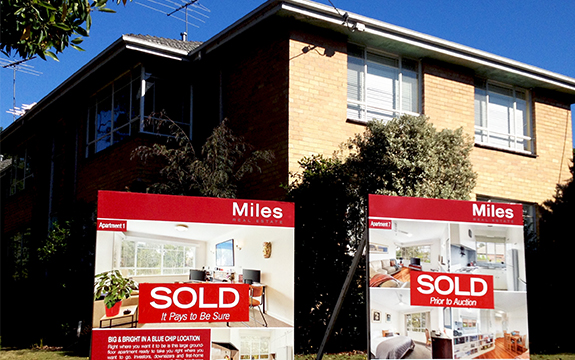Effects of seasonality in Australian house and unit prices

In Summary
- New Swinburne-led research reveals the least and most expensive months to purchase property in Australia
- May was found to be the cheapest month in which to buy a house or unit in Melbourne
- Substantial seasonal effects exist for both the smallest and largest capital cities
If you’re in the market to buy or sell a house, new research from Swinburne University of Technology and two other Australian universities reveals the least and most expensive months to purchase property in Australia.
Economics Professor Abbas Valadkhani from Swinburne together with Professor Andrew Worthington (Griffith University) and Professor Russell Smyth (Monash University) used monthly data from December 1995 to July 2015 to investigate seasonality in house and unit prices in each of Australia’s capital cities.
This is the first study of its kind to examine seasonality in different types of housing, showing in which months house and unit prices are, on average, more or less expensive and in which capital cities seasonal price rises or falls are more significant.
“Our main finding is that substantial seasonal effects exist for both the smallest (Darwin and Hobart) and largest (Melbourne and Sydney) capital cities and that these seasonal effects are mostly predictable,” Professor Valadkhani says.
“If you’re looking to purchase a house in Melbourne, May was found to be the cheapest month to buy, offering an average saving of 2.52 per cent. Based on 2015 median house prices for Melbourne, this translates into a $20,670 saving for homebuyers.”
The research shows the most expensive month to buy a house or a unit in Melbourne is July, with house prices increasing by an average of 3.22 per cent and unit prices rising by 2.79 per cent for that month.
The observed month-of-the-year effects have undergone significant changes in almost all capital cities for both house and unit prices since the 2008 global financial crisis (GFC).
“The Australian market has experienced significant change in the 20 year sample period. In the two largest markets of Melbourne and Sydney, there is evidence that the investment boom has influenced the seasonal effect in the second sample period (2008-2015),” Professor Valadkhani says.
Before 2008, the most and least expensive months of the year to purchase houses in Melbourne were January (1.08 per cent higher) and November (0.74 per cent lower). However, the most and least expensive months after 2008 for Melbourne were July (3.22 per cent higher) and May (2.52 per cent lower).
“Both house and unit prices were noticeably more volatile in the more recent period, compared to the period before GFC, where they were much more stable.
“Therefore, while it may be possible for buyers and sellers to make abnormal gains with knowledge of these seasonal effects, there is no guarantee that they will not experience further change in the future.”

